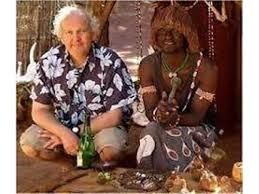

What I think about most is how much worse the effects of the climate crisis are in other parts of the world, and that the populations most often affected are the most vulnerable – marginalized populations, Black and Brown communities, Indigenous communities. But even given that statistic, life hasn’t changed much there. In real life, New Hampshire has seen its growing season extended by twenty-two days in the last century, which still sounds shocking every time I say it. Julie Carrick Dalton: It’s hard not to think about it. Do you think about it beyond what you write about in your fiction? I looked her up right before the book came out and we’ve reconnected, which has been an added bonus of publishing this novel.Īmy Brady: Let’s return to the subject of climate change. I haven’t seen her in more than thirty years. Stephanie and I never had a falling out like Cadie and Daniela did, but we did lose touch after high school. Formative friendships like that stick with you, even if you drift apart. We used to imagine all sorts of adventures for ourselves, make plans we never followed through on. We ran wild all summer, riding bikes, swimming, playing in the woods, climbing trees, and building treehouses. She was older, cooler, the Daniela to my nerdy, awkward Cadie. Julie Carrick Dalton: The relationship between Cadie and Daniela is based on my friendship with a childhood neighbor named Stephanie. Where did they come from? Are they based on anyone you’ve known in real life? I explored the many ways the temperature increase might affect different members of the community and set the town and the environment on edge.Īmy Brady: Tell me more about Cadie and her friend Daniela. I became interested in the idea of portraying this small, insular New England town undergoing a slow rise in temperature. As I started incorporating small environmental changes in the story, climate change itself became almost like a character.

I used the changes in her ecosystem as a way to underscore how much things had changed since she left home. When I brought her back to her hometown as an adult, I wanted the world to feel different to her. From the beginning, Cadie emerged as a character who was deeply in tune with the natural world. I wanted to bring my main character, Cadie Kessler, home decades later to face this secret. Waiting for the Night Song began as a story about two young girls who chose to cover up a crime and the lifelong ramifications of keeping this terrible secret. Julie Carrick Dalton: I didn’t start out with a focus on climate change. I spoke with Dalton about what inspired the environmental themes of her novel, what she considered to be literature’s power to address climate change, and what life is like on her own organic farm.Īmy Brady: Your novel is set against a backdrop of environmental devastation and its consequences.

The eeriness creates an unsettling backdrop for the novel’s central mystery, which buoys the plot along at a swift and satisfying pace. Climate change has altered this familiar place in ways they’re just beginning to understand. But when they return to their New Hampshire home, something about the place seems different: the seasons are off, the land has grown strange, and not because of anything supernatural. It stars Cadie and Daniela, two childhood friends who reconnect as adults to face an old secret that has continued to haunt them. That’s what makes her novel so good – and at times, heartbreaking. She describes the landscape with the eye of a painter but with the heart of an environmentalist. Julie Carrick Dalton’s debut novel, Waiting for the Night Song, hums with the magic of a New England childhood.


 0 kommentar(er)
0 kommentar(er)
